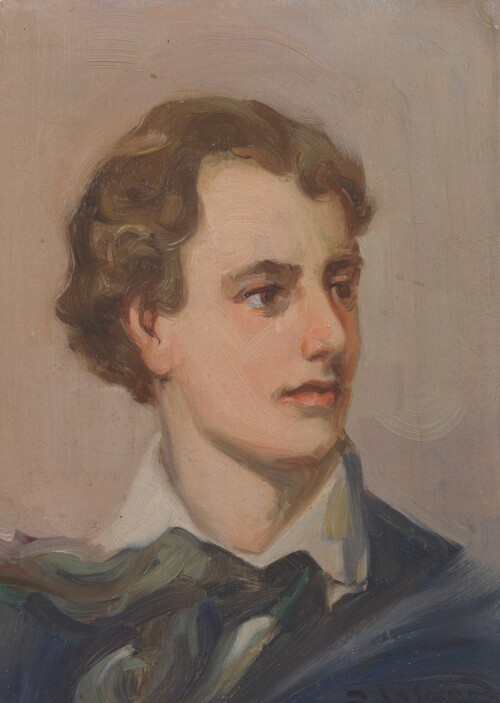| 43 |
Greek, 1882-1978
Lord Byron
oil on hardboard
signed lower right
22 x 16 cm
PROVENANCE
private collection, Athens
| sold for 1,414.20 € |
Theodoros Lazaris was born in Livadia in 1882.
In 1906 he enrolled at the School of Fine Arts, Athens, where he studied painting under Georgios Jakobides, Georgios Roilos and Dimitrios Geraniotis with a scholarship from the Municipality of Livadia. During World War I, between 1912 and 1918, he joined the armed forces. He graduated in 1919.
The majority of his work is inspired by Greek rural landscape and greatly influenced by impressionism as he always kept close links with France. In his work, the spectator can witness the impressionistic quality of light, brushstroke and subject matter creating works depicting Greek nature and its atmospheric variations with a poetic feeling.
Lazaris received many awards for his work including the Medal of the City of Paris and the Order of the Patriarch of Alexandria.
The National Gallery of Greece staged a large-scale retrospective exhibition of his work in 1974. In 1934 he participated at the Venice Biennale and in 1969 at the Salon de l’Art Libre in Paris.
His work can be found in the National Gallery of Greece, the Municipal Gallery of Athens, the Municipal Gallery of Rhodes, the Koutlides Collection, the Averoff Gallery and many other public and private collections.
Lord Byron was born into an aristocratic family in 1788 in London.
From 1805 until 1808 he was educated at Cambridge University. At the age of 21, he entered the House of Lords and the following year he began a long journey in the Mediterranean. During this tour, he visited Greece in 1809 for the first time and immediately fell in love with the country. After meeting Ali Pasha, the Ottoman ruler at the time, he travelled all over the country and visited the monuments of ancient Greek civilization. In 1811, while suffering from malaria, Byron decided to return to Britain.
In 1823, Byron received an invitation to actively support the Greek struggle for Independence. He spent a tremendous amount of his fortune to repair ships for the Greek fleet and even set up his own military squad.
After staying for six months in Cephalonia he decided to move to Morias in the Peloponnese but finally stayed in Missolonghi. While there he contacted Alexandros Mavrokordatos to whom he donated another large instalment of his fortune to help further the Greek cause.
At the same time, Lord Byron acted as a channel of communication between Greek fighters and British philhellenes that helped economically the Greek war of independence.
The great philhellene fell ill and died on the 19th of April 1824 in Missolonghi at the young age of 36.
The lamentations after the great poet’s death came not only from the Greek freedom fighters who regarded him as one of them but also from England where the distinguished romantic poet was mourned publicly.
Dionysios Solomos composed a long ode to the memory of Lord Byron, one of the greatest admirers Greece has ever had.
